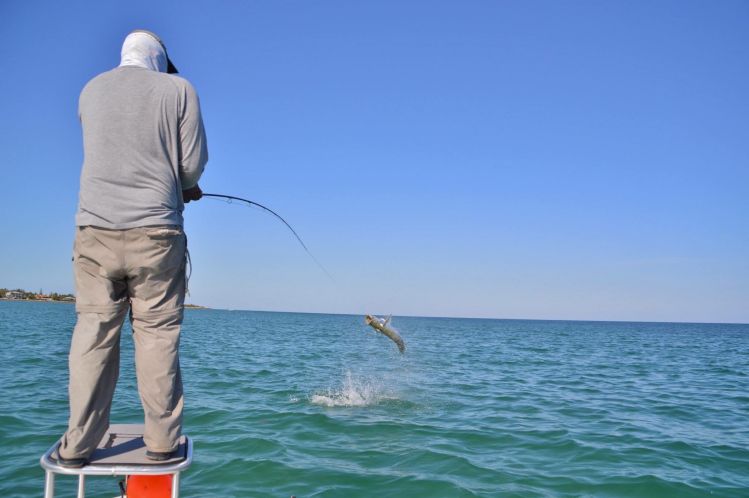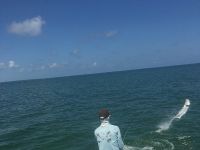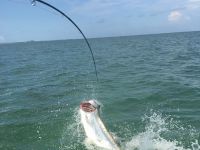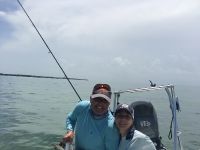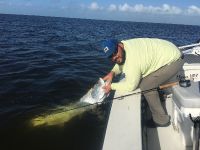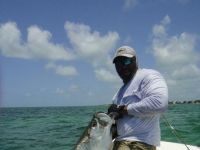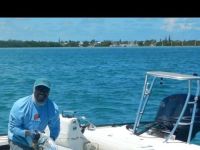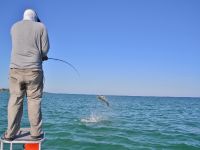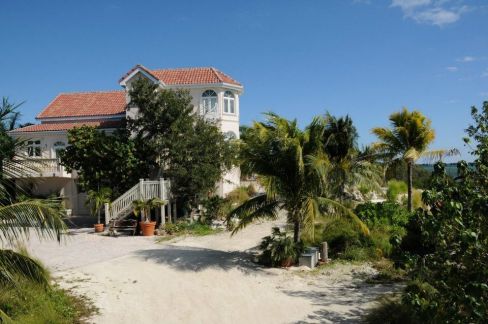Tarpon season in the keys
Every spring in Florida and the keys , we get to witness one of the most spectacular and exciting angling events in the fishing world: the annual tarpon migration. These fish begin their migratory journey south to the Florida keys, for their annual spawning ritual, coming from places as far north as Virginia in the Atlantic coast and Texas in the northern Gulf of Mexico.
Starting around early March, millions of fish start flooding the inlets, passes, bridges and backcountry areas of south Florida and the Everglades. By mid April, these fish start moving out of those staging areas in big groups and begin their southbound journey along the ocean side shorelines and flat edges of the Atlantic Ocean and the Gulf of Mexico.
While traveling southbound, These f Ver más...Tarpon season in the keys
Every spring in Florida and the keys , we get to witness one of the most spectacular and exciting angling events in the fishing world: the annual tarpon migration. These fish begin their migratory journey south to the Florida keys, for their annual spawning ritual, coming from places as far north as Virginia in the Atlantic coast and Texas in the northern Gulf of Mexico.
Starting around early March, millions of fish start flooding the inlets, passes, bridges and backcountry areas of south Florida and the Everglades. By mid April, these fish start moving out of those staging areas in big groups and begin their southbound journey along the ocean side shorelines and flat edges of the Atlantic Ocean and the Gulf of Mexico.
While traveling southbound, These fish stop at the many bridges, passes, banks and backcountry basins that divide the gulf from the Atlantic to feed and rest, providing a myriad of opportunities for fisherman. By late May-early June most fish have already spawned and will start moving back up north to all the places where they came from.
There is nothing more exciting than watching a school of tarpon swimming over gin clear water coming right at you, or a tarpon laying motionless in a backcountry edge or basin while your guide maneuvers the boat on the pushpole to give you that perfect angle to capitalize on your shot. Without a doubt, this is one of the most challenging forms of fishing there is, as these traveling fish are not in a feeding mode but rather into a migratory pattern. You almost have to put the fly or lure right on their faces in order to trigger a reaction bite.
Tarpon are by far my favorite fish to target and Needless to say, I look forward to spring time every year. From April through early July, I find myself in the keys, fishing mostly fly fisherman during the day and running a few bait trips at late afternoon, into the night.
During any given day, we throw flies at the traveling schools of tarpon in the ocean side, travel to the Everglades backcountry to throw flies and plugs at rolling and laid up tarpon or drift live crabs and mullet in the bridges and passes that divide the Atlantic from the gulf. We have a constant traffic of fish and is not uncommon to see a couple hundreds or even thousands during any given fishing day. It is safe to say that there is no other place in the world to sight fish for tarpon like the Florida keys.
Tarpon season is the busiest time of the year for guides in south Florida and the keys. Most tarpon guides in the keys have a long time repeating clientele and are booked a year in advance by the same clients, year after year. so, do not expect to find an open guide during prime tarpon time if you don't book your trips months in advance. Most fisherman book their guides for several weeks or days in a row so it doesn't take many people to max out a fishing guide's calendar during the season. That being said, it is absolutely necessary to book early.
Anglers from all over the world flock to the keys in the spring to try their luck at the mighty silver king. Although I have to honestly say, the word "luck" has minimum influence in this game, specially when it comes to flyfishing. Fishing for migratory tarpon in the clear waters of the keys demands casting ability and fishing skills that are only obtained with practice and time on the water. If you have never done this and never have picked up a rod bigger than a 9wt, do not expect to show up to the boat without previous preparation and have your guide do the magic for you.
If that is your case, start practicing your casting several weeks or months before the trip, book at least 3 days with the same guide and keep realistic expectations. Tarpon fishing is not a numbers game. During any given day you might have over 40 shots at fish, see a couple hundreds and only get a couple or more to eat, depending on your expertise and casting ability. Then some days you get the opposite, the fish won't push as good, the weather won't cooperate and shots will be few in between. You will need to take full advantage of those few shots and make them count. It also takes experience and skill to learn how to spot fish, present the flies, properly feed the fish, set the hook and clear the line. Once you hook one, you will also need to use the proper fighting techniques to break the will of a 100 pound animal attached to a fly rod, in the least amount of time.
You need to be able to properly double haul and cast 50 to 70 feet of line with a maximum of 3 false cast. It's almost always windy in the keys. In fact, the fish are less spooky and eat way better when the wind blows so you will need to be able to cast during windy and lousy weather conditions. Being able to develop line speed by proper double hauling is imperative and the only way you will be able to handle windy days. Tarpon fishing in the keys, as well as permit and bonefish demands your A game. Do not take previous casting training and preparation lightly. Practice your casting before the trip, not on the boat when the fish are passing in front of you.
This may sound complicated at first but as you do it, with the help and coaching of your guide, your odds of success will greatly increase. the reward of watching a 100 pound plus silvery animal, eat a 3 inch fly, in clear shallow water, and then sky rocket after ripping 200 yards of line off your reel, make it all worth it. It's a very compelling game and when you get it done, puts you at the pinnacle of the angling world.
I am a certified fly casting instructor (IFFF) and I have been passionately pursuing these fish at both ends of the skiff for several years. I can help you tune up your casting skills and guide you to the tarpon experience of your life.
As I'm writing this, I have open 2 days in April (22-23) 5 days open in May (17th through 21st) and 2 weeks in June. All prime tarpon time during the heart of the season in the keys.
Contact me and I'll be more than happy to help you make your tarpon dreams come true.
Tight lines and bow to the silver king!!


